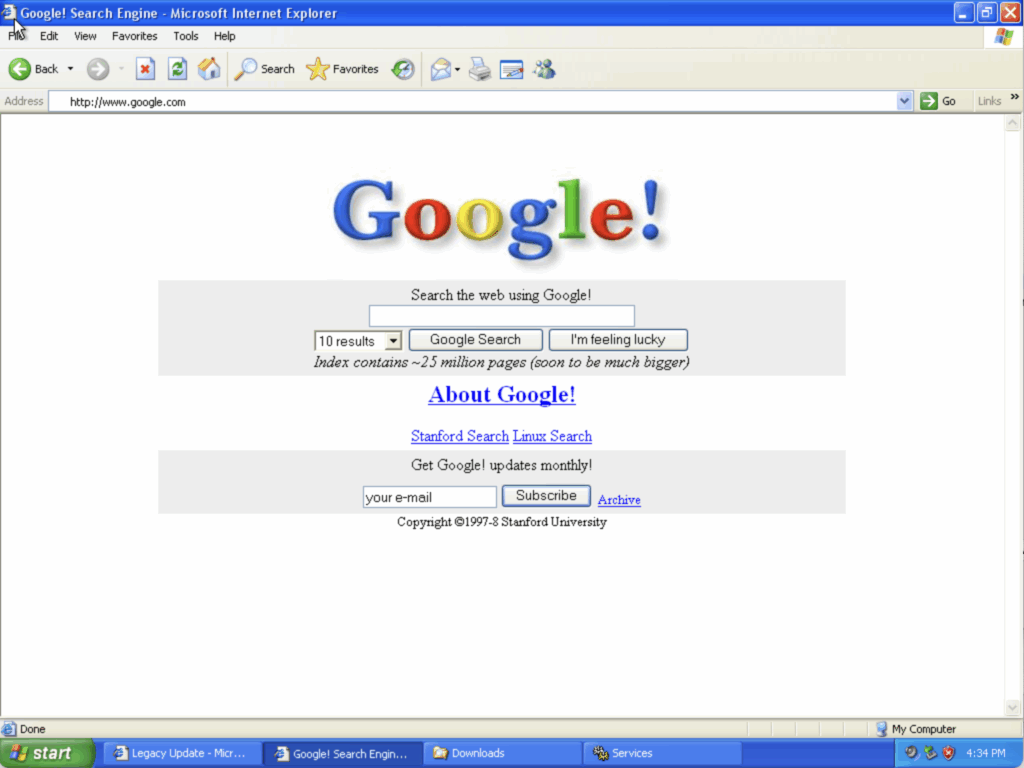In August 1996, BackRub was made available as a link from Stanford’s website. A year later, Page and Brin rebranded the site as “Google.” The name was an accidental misspelling of googol, a term coined by a mathematician’s young son to describe a 1 with 100 zeros after it. Even back then, the pair was thinking big.

Google.com as it appeared in 1998.
Credit:
Jeremy Reimer
By mid-1998, their prototype was getting over 10,000 searches a day. Page and Brin realized they might be onto something big. It was nearing the height of the dotcom mania, so they went looking for some venture capital to start a new company.
But at the time, search engines were considered passée. The new hotness was portals, sites that had some search functionality but leaned heavily into sponsored content. After all, that’s where the big money was. Page and Brin tried to sell the technology to AltaVista for $1 million, but its parent company passed. Excite also turned them down, as did Yahoo.
Frustrated, they decided to hunker down and keep improving their product. Brin created a colorful logo using the free GIMP paint program, and they added a summary snippet to each result. Eventually, the pair received $100,000 from angel investor Andy Bechtolsheim, who had co-founded Sun Microsystems. That was enough to get the company off the ground.
Page and Brin were careful with their money, even after they received millions more from venture capitalist firms. They preferred cheap commodity PC hardware and the free Linux operating system as they expanded their system. For marketing, they relied mostly on word of mouth. This allowed Google to survive the dotcom crash that crippled its competitors.
Still, the company eventually had to find a source of income. The founders were concerned that if search results were influenced by advertising, it could lower the usefulness and accuracy of the search. They compromised by adding short, text-based ads that were clearly labeled as “Sponsored Links.” To cut costs, they created a form so that advertisers could submit their own ads and see them appear in minutes. They even added a ranking system so that more popular ads would rise to the top.

